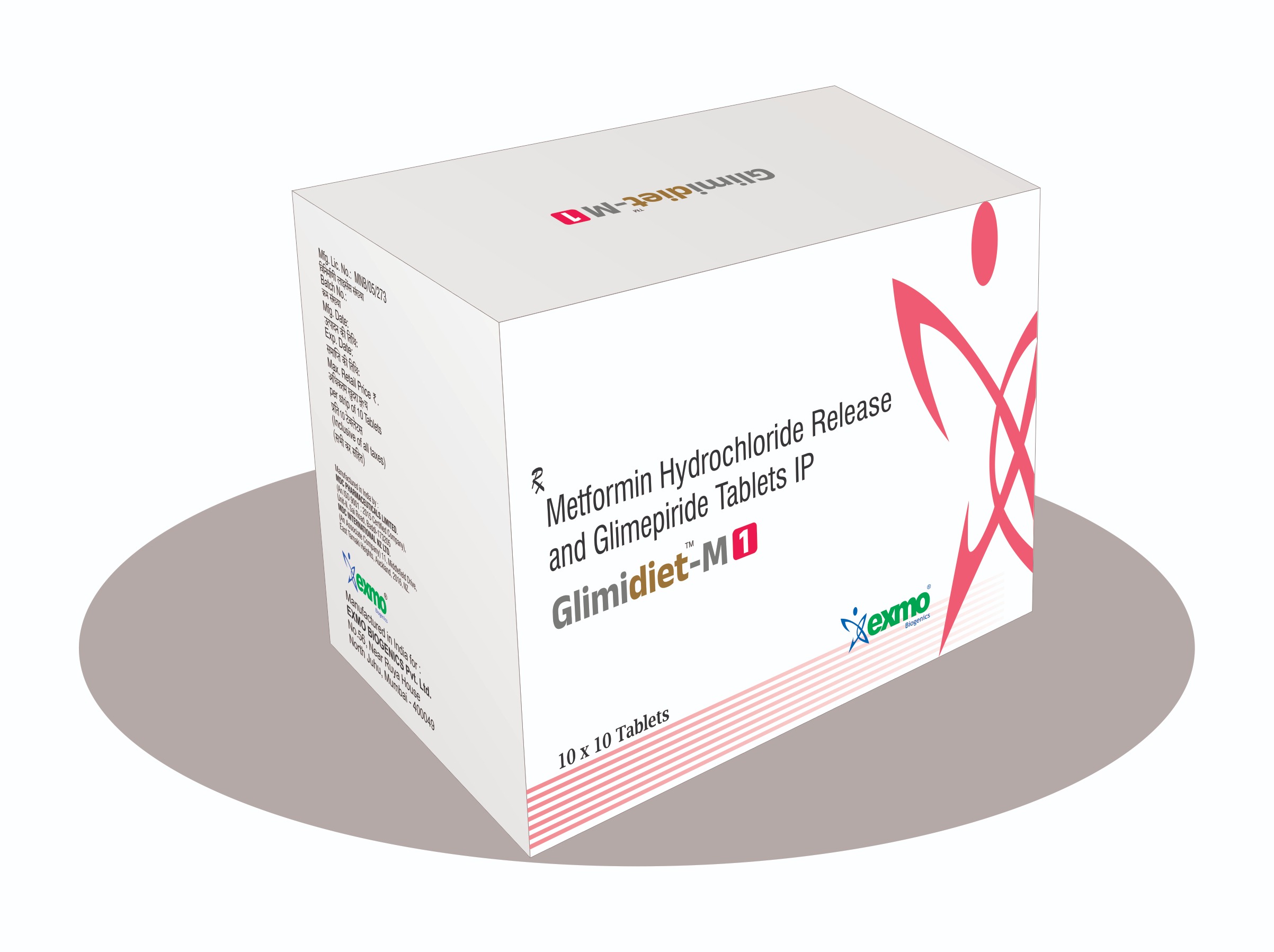COMPOSITION
GLIMIDIET- M 1 : Each uncoated bilayered
tablet contains glimepiride IP 1mg and metformin hydrochloride IP (in prolonged
release form) 500mg.
GLIMIDIET
M 2 : Each uncoated bilayered tablet contains glimepiride IP 2mg and metformin
hydrochloride IP( in prolonged release form) 500mg.
THERAPEUTIC
INDICATIONS
For
the management of type 2 diabetes mellitus when diet, exercise and single agent
(glimepiride or metformin alone) do not result in adequate glycaemic control.
DOSAGE
AND ADMINISTRATION
Initial
dose : 1 tablet of GLIMIDIET- M should be administered once daily during
breakfast or the first main meal. Maximum dosing : 8mg of glimepiride and
2000mg of metformin Do not crush or chew the tablet.
CONTRAINDICATIONS:
Hypersensitivity
to glimepiride, other sulfonylureas, other sulfonamides, metformin, or any of
the excipients of GLIMIDIET- M; pregnant women; breast-feeding women; Any type
of acute metabolic acidosis (such as lactic acidosis,diabetic ketoacidosis,
diabetic pre-coma),Severe renal failure (GFR˂30ml/min)acute conditions with the
potential to alter renal function (dehydration, severe infection, shock,
intravascular administration of iodinated contrast agents); acute or chronic
disease which may cause tissue hypoxia (cardiac or respiratory failure, recent
myocardial infarction, shock); hepatic insufficiency; acute alcohol
intoxication; alcoholism.
WARNINGS
:
For
Glimepiride: In exceptional stress situations (e.g. trauma, surgery, febrile
infections) blood glucose regulation may deteriorate, switch to insulin may be
required. For Metformin: Metformin accumulation increases the risk of lactic
acidosis. In case of suspected symptoms, the patient should stop taking
metformin and seek immediate medical attention.GFR should be assessed
regularly. Intravascular administration of iodinated contrast agents may lead
to contrast induced nephropathy, resulting in an increased risk of lactic
acidosis . GLIMIDIET- M to be discontinued under conditions that alter renal
function, at the time of imaging procedure, surgery with general, spinal or
epidural anaesthesia and not restarted until at least 48 hours after provided
that renal function is stable. PRECAUTIONS: Risk of hypoglycaemia. Treatment of
patients with G6PD can lead to hemolytic anaemia. Regular monitoring of
thyroid-stimulating hormone (TSH) levels is recommended in patients with
hypothyroidism . Long-term treatment with metformin has been associated with a
decrease in vitamin B12 serum levels which may cause peripheral neuropathy.
Monitoring of the vitamin B12 level is recommended. Overweight patients should
continue their energy-restricted diet, usual laboratory tests for diabetes
monitoring should be performed regularly. Metformin used in combination with
insulin or sulfonylureas may cause hypoglycaemia.
PREGNANCY
AND LACTATION:
Contraindicated
in pregnancy and lactation; switch to insulin recommended. Data insufficient to
recommend use in paediatric patients.
ADVERSE
REACTIONS:
For
glimepiride - Hypoglycaemia may occur and may also be prolonged; temporary
visual impairment; gastrointestinal symptoms (e.g., nausea, vomiting, abdominal
pain, sensation of fullness in epigastrum, diarrhoea) may occur; hepatitis,
elevation of liver enzymes, cholestasis and jaundice may occur; change in blood
picture may occur; allergic reactions or pseudo allergic reactions may occur
occasionally. Like all sulfonylureas, it can cause weight gain. For metformin –
GI symptoms, metallic taste, mild erythema, decrease in Vit B12 absorption,
very rarely lactic acidosis, Hemolytic anemia, Reduction of thyrotropin level
in patients with hypothyroidism, Hypomagnesemia in the context of diarrhea,
Encephalopathy, Photosensitivity, hepatobiliary disorders.
